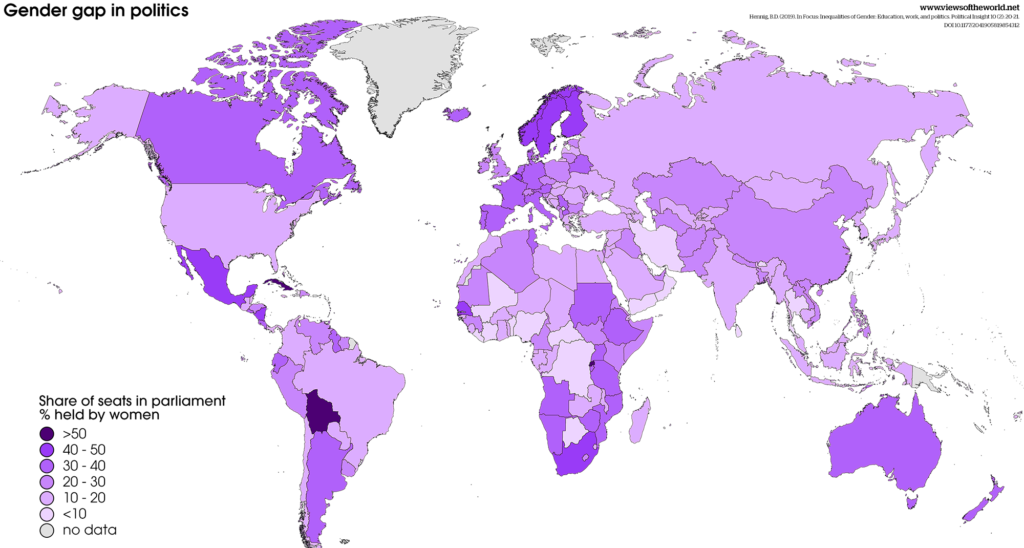Understanding the Implications of Inequality for the Elites
Inequality has become increasingly salient in the public debate. The COVID-19 crisis deepened social gaps, benefiting a few billionaires, for instance tech bosses, while driving large proportions of people to poverty and food insecurity. Although the wealthiest people on the planet are still concentrated in North America and Europe, the wealth of billionaires grew in China (+1146%), Russia (+80%), India (+90%) and Brazil (+99%), according to UBS billionaires report 2020. Income concentration is increasingly generating a global caste of superrich individuals that cut across the Global North and Global South.Income concentration is increasingly generating a global caste of superrich individuals that cut across the Global North and Global South.
While it is clear that inequalities, both of wealth and income, punish those at the bottom of the income distribution, we know much less about how inequality affects those located at the top. A straightforward answer is that a skewed income and wealth distribution benefits the wealthy as they gain from cheap labour and other forms of material and symbolic distinctions. However, do higher levels of inequality systematically prove beneficial to the global elites? Or, to put it differently, will the wealthy generally prove supportive of measures aggravating inequality such as tax cuts and social welfare retrenchment? Such a perspective is most visibly contradicted by global initiatives like The Giving Pledge, urging “the world’s wealthiest individuals” to commit to redistribution on moral grounds. Philanthropy has been booming over the past decades, partly because it allows elites to reap social capital and prestige.

Given the limits of voluntaristic commitments – which vary across individuals, countries and macroeconomic contexts – and the potentially noxious consequences of private (and largely financialised) philanthropy, one should, however, hope that moral commitment and social prestige are not the sole drivers of elite commitment to redistribution. Luckily, they are not. From an economic perspective, the “rich” have material incentives to give up part of their assets to protect their position. After all, more concentrated resources lead to higher shares of marginalised or discontent citizens likely to fight for redistribution through votes or political violence.
The potential risks of political instability to the wealthy point to the important issue of how economic inequality articulates to democracy or the lack thereof. The potential risks of political instability to the wealthy point to the important issue of how economic inequality articulates to democracy or the lack thereof. It was traditionally assumed that authoritarian governments and their ingrained tendency to protect elites better suit those benefiting from inequality. Numerous cases have been documented where corporate leaders have endorsed authoritarian incumbents or coups against democracy in order to curtail redistribution and curb political representation. However, political scientists have increasingly shown that authoritarian regimes are more likely to expropriate wealth under particular circumstances such as during crises of legitimation. In some cases, economic elites have pushed for democratisation after experiencing the dangers of authoritarianism through persecution and expropriation. Emerging democracies opened the way for majoritarian groups to reshape income distribution and potentially diminish inequality, but they have also protected wealth through a liberal commitment to the rule of law and private property.
In many ways, the inequalities currently prevailing in democracies can be traced to the wave of democratisation of the last quarter of the twentieth century. New democracies frequently inherited repressive structures from previous authoritarian regimes as a result of biased institutional arrangements with former elites and ousted autocrats. The powerful, however, are also wielding extensive political leverage in more long-standing democracies. In the 2020 US elections, for example, 10 individuals donated nearly 60 million dollars for political campaigns and parties. According to extensive research, such practices allow the preferences of top-earners to translate to actual policy much more frequently than they do for average-income citizens.
For stability to prevail in unequal democracies, inequalities need to be perceived as legitimate.For stability to prevail in unequal democracies, inequalities need to be perceived as legitimate. Recent studies have shown that the well-off are in constant need of justifying their advantage. Several cultural processes play a key role in mediating the merit of elites while questioning the deservingness of the poor through racial, ethnic and national stigmatisation that justify their marginalisation and exclusion from social policies. Where elite narratives justifying inequality fail to resonate with the general public, democracy risks being challenged by anti-establishment leaders and parties. Opening the Pandora’s box of populism remains, however, an uncertain undertaking for the elites as it provokes political volatility and may equally result in favours for the rich as in more radical redistributive policies putting their assets at risk.
In short, how the wealthy relate to inequality varies across contexts and may thus best be explored as an empirical question.
Thomas Piketty and the Inequality Economists
 Thomas Piketty at the reading for Capital in the Twenty-First Century on 18 April 2014 at the Harvard Book Store in Cambridge, Massachusetts.
Thomas Piketty at the reading for Capital in the Twenty-First Century on 18 April 2014 at the Harvard Book Store in Cambridge, Massachusetts.Over the last decade, a vivid scholarly debate over the issue of inequality and its drivers has taken place among economists and attracted a lot of public attention. It includes, most prominently, Thomas Piketty and other French economists such François Bourguignon, Thomas Philippon, Emmanuel Saez and Gabriel Zucman but also Anglo-Saxon scholars such as Anthony Atkinson, Joseph Stieglitz and Branko Milanovic. Piketty landed an Amazon’s best-seller with his book Capital in the Twenty-First Century (2014), in which he argues that welfare states and social policies are the exception in history while the general tendency under capitalist conditions is for inequality to rise as the returns to capital are greater than the general rate of economic growth. Piketty therefore opposed previous theories, such as Simon Kuznets’ U-shape model assuming that under capitalism inequality first rises to subsequently decline with the apparition of redistributive mechanisms and policies. From Piketty’s perspective, the “egalitarian” decades from the 1930s to the 1970s, while constituting an exception, also prove that economic inequality is not predetermined but may be acted upon through political and social measures. Others such as Branko Milanovic have argued for more cyclical approaches to inequality, suggesting that it is sporadically checked by wars, plagues and demographic disruptions that are exogenous to the market.
Further readings:
- Robert H. Wade, “The Piketty Phenomenon and the Future of Inequality”, real-world economics review, no. 69 (7 Oct. 2014): 2–17.
- Mike Savage, “An Interview with Thomas Piketty, Paris 8th July 2015”, Working Paper no. 1, International Inequalities Institute, LSE, September 2015.
Measuring Inequality

Inequality measurement can take many forms. Depending on what kind of inequality is being measured (economic, health, education, etc.), different types of indicators will be used (revenue, wealth, average years of schooling, life expectancy…). Measuring inequality further depends on the units of measurements (individuals, households, tax-paying units, etc.) and the types of entities/groups that are being compared. Measuring inequality across country or regions thus differs from measuring inequality within a given society (e.g., between specific segments of a given population) or between citizens globally.
Gini Index
The most common index to measure economic inequalities in terms of revenue or wealth is the Gini coefficient. It measures the extent to which the distribution of income across a society deviates from a perfectly equal distribution. It is based on the Lorenz curve, which represents the cumulative proportion of the population on the horizontal axis and the cumulative proportion of income on the vertical axis. If one person earned all income (maximum inequality) the Gini coefficient would be equal to 1. If income was shared equally between all, the Gini coefficient would equal 0.
Palma Index (or Ratio Measures)
Ratio measures compare how much revenue or wealth is held by a specific segment of the population as compared to another. They allow to adjust for the Gini index's oversensitivity to changes in the middle of the distribution. The Palma ratio, for instance, measures the share of national income of the top 10% compared to that hold by the lower 40%. In more equal societies this ratio will be 1 or below but in very unequal societies it might go up to 7.
Theil Index
Theil indexes, finally, measure inequality in terms of how wealth or revenue is spread among different regions (e.g. urban and rural).
For further reading:
- UNDESA, Inequality Measurement, Development Issues no 2, 21 October 2015
- GSDRC, “Measuring Inequality”
Debate on Inequality and the Social Contract

Liberty and equality entertain an uneasy and fraught relationship. How to reconcile the two has been one of political theory’s central quandaries. Proponents of radical approaches to political equality such as Rousseau have argued that equality may only come at the prize of providing a narrow – or positive – definition of freedom. An approach that has also been applied by the French revolutionaries who, most notably during the Reign of Terror (1793–1794), applied a strict definition of what it meant to be free under republican conditions. Liberal proponents, on the other hand, have preferred a negative approach to freedom – privileging being free over being equal – by confining equality to law and reserving freedom to the private realm of individual expression. The radical impetus of equating being free to being equal may thus be opposed to the liberal impetus of equating being free to being different.
Political philosophers have further debated on whether inequality stems from history – or, as Rousseau suggests in his Second Discourse, from civilisation – and thus depends on human intervention or whether it is an inalterable anthropological constant. Liberals have argued the former, insisting that while inequality remains the norm in nature, it is mankind’s role to tame it through policies and laws (e.g., social contracts). Sociologists such as Gaetano Mosca and Robert Michels have come to the more sobering conclusion that elites are a quasi-permanent fixture of human societies and that, eventually, a minority of actors would come to dominate all political systems, even democracies. John Rawls, finally, proposed an elaborate theory of social justice arguing that the social contract needs to guarantee at once fundamental rights to individuals, equality in terms of opportunities, and that economic inequality is justified only to the extent that it serves to improve the lives of the worst off through redistributive mechanisms.
For further reading:
Jeff Manza, “Political Inequality”, in Emerging Trends in the Social and Behavioral Sciences, ed. Robert Scott and Stephen Kosslyn (John Wiley & Sons, Inc., 2015): 1–17.










